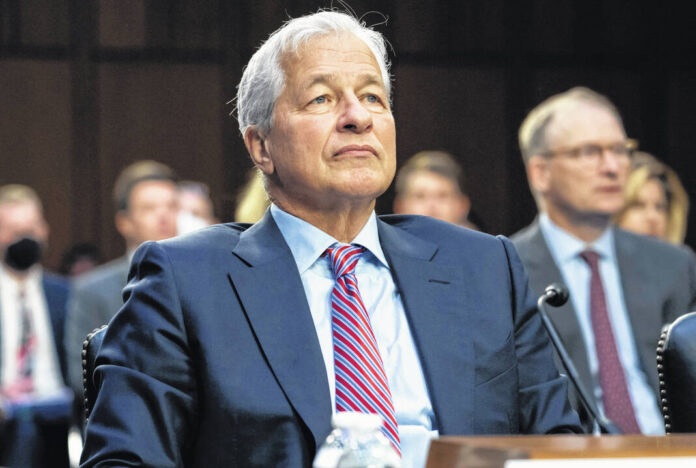U.S. banks are being forced to do something they haven’t done for 15 years: fight for deposits.
After years of earning next to nothing, depositors are discovering a trove of higher-yielding options like Treasury bills and money market funds as the Federal Reserve ratchets up benchmark interest rates. The shift has been so pronounced that commercial bank deposits fell last year for the first time since 1948 as net withdrawals hit $278 billion, according to Federal Deposit Insurance Corp. data.
To stem the outflows, banks are finally starting to lift their own rates from rock-bottom levels, particularly on certificates of deposit, or CDs. More than dozen U.S. lenders including Capital One Financial Inc. are now offering an annual percentage yield of 5% on CDs maturing in around a year, a rate that would have unspeakably high two years ago. Even the big banks are feeling the heat. At Wells Fargo & Co., 11-month CDs now pay 4%.
The jump in rates on CDs and other bank deposits has been a boon for consumers and businesses, but it’s a costly development for the U.S. banking industry, which is bracing for a slowdown in lending and more writedowns, says Barclays Plc analyst Jason Goldberg. And for smaller regional and community banks, losing deposits can be serious and weigh heavily on profitability.
“There are challenges ahead for banks,” Goldberg said. “Banks reflect the economy they operate in, and most forecasts call for slowing GDP growth and increasing unemployment.”
The very biggest banks can afford to slow-walk their rate increases, simply because they still have relatively high deposit levels. Overall, the average rate on a one-year CD is roughly 1.5%. That’s up from 0.25% a week before the Fed began raising rates a year ago, but still well below inflation. After a year of record profits, the foot-dragging has earned banks plenty of ire from politicians globally.
Nevertheless, banks are feeling more pressure to boost rates, which will raise funding costs and crimp profit margins. According to Barclays, the median large-cap bank can expect growth in net interest income, a measure of lending profits, to slow to 11% this year, from 22% last year.
JPMorgan Chase & Co. Chief Executive Officer Jamie Dimon made clear that some institutions will feel pressure on the firm’s earnings call in January: “Banks are competing for the capital, money, now. We’ve never had rates go up this fast.”
For depositors, CDs have been popular because they tend to offer the highest rates. For banks, they’re a way to lock up funding for a set period of time, unlike checking or savings accounts.
Rising CD rates have led to huge growth in sales of the product: CDs outstanding totaled $1.7 trillion in the U.S. banking industry in the fourth quarter, up from $1.49 trillion in the third. That’s the biggest quarterly jump in at least two decades, according to S&P.
CDs are just one piece of how banks fund themselves, but funding costs are broadly rising as the Federal Reserve hikes rates.
When the Fed boosts rates, banks usually get higher lending income quickly, as the rates on the loans they’ve made reset to higher levels. They can be slower to boost payments to depositors. The rising income and lagging growth in expenses mean that banks can see their net interest income soar, as happened last year.
Net interest income last year for the U.S. banking system was $632.9 billion, up 20% from the year before, according to the Federal Deposit Insurance Corp.
The lenders getting hit hardest by rising funding costs are community and smaller regional banks, said Arnold Kakuda, a bank credit strategist at Bloomberg Intelligence.
Ultimately, banks will probably have to continue raising deposit rates as they compete with other kinds of investments that provide more yield, according to Jan Bellens, a global banking and capital markets sector leader with Ernst & Young.
“Banks will just have to pay more for deposits,” he said. “Customers will start to gradually move deposits if they are no longer happy with the rates they get, and that’s why the banks are very keen to lock in consumers with CD products.”







